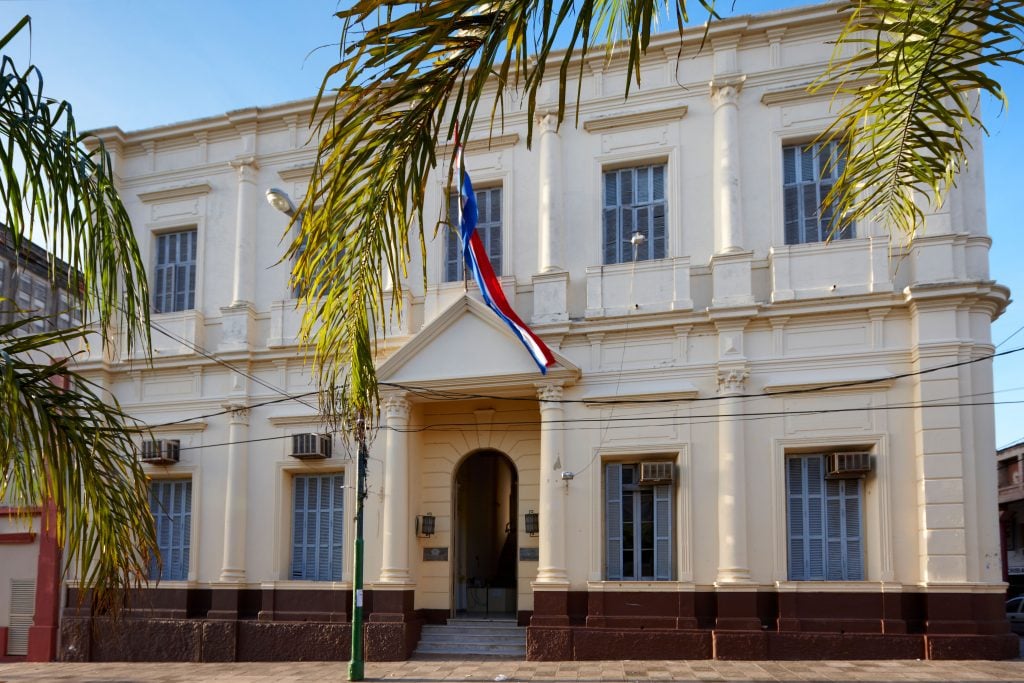Archaeology & History
The Hunt: $200 Million Worth of Art Is Still Missing From a Paraguay Museum
Thieves dug a tunnel to steal European masterworks back in 2002.

Thieves dug a tunnel to steal European masterworks back in 2002.

Vittoria Benzine

In July 2002, a heist at the National Museum of Fine Arts of Asunción in Paraguay rocked the world, not only due to the lost masterworks, which were valued at around $200 million, but the elaborate ploy the thieves used to pull off their robbery. They favored European paintings, with a haul that included a self-portrait by Tintoretto, Tête de Femme by Adolphe Piolt, a landscape by Gustave Courbet, a Madonna and Child by Bartolomé Estéban Murillo, and an unattributed 16th-century portrait of Saint Jerome.
The museum was founded in 1909, 67 years after Paraguay officially declared its independence from the Spanish Empire. It occupies the same building as the National Archives, and holds 650 artworks ranging from paintings to ceramics, alongside antique coins and more from the collection of the inaugural director-general Juan Silvano Godoi.
The museum’s founding was meant to mark a new chapter for the republic, but centuries of political volatility could partially explain why the institution hadn’t managed to install any security cameras to capture the thieves on film.
Instead, a shocking, subterranean discovery told the story. Authorities found that an 80-feet tunnel had been dug to connect the museum with a health food store across the street.
Further investigation revealed that the men who’d opened that store had used fake identities. They had even carved out another leg of the tunnel that led to the parking lot of a hotel nearby, which the bandits likely used to escape.

Adolphe Piot, Tete de Femme (date unknown). Photo: The History Collection / Alamy Stock Photo
Legend of the haul lives on and international police forces have scoured the black market ever since. Only one opportunity has presented itself so far. In 2008, the National Centre for Cultural Heritage Protection at the INTERPOL-Argentina Department received a tip that the lost “San Gerónimo” by an anonymous artist and valued at $200,000 was up for illicit sale in Posadas, Argentina.
Soon enough, a police fact-finding mission accompanied by Argentinean Federal forces recovered the painting in mint condition. The work was back home by that July, as part of a larger push by Argentinian authorities to repatriate stolen artwork found on their soil.
Those forces are probably still monitoring the art world’s underbelly for the remaining lost artworks. Meanwhile, the museum has taken matters into their own hands. In February, the institution commissioned five contemporary painters to recreate the lost artworks while 700 fascinated attendees watched on.
The resulting canvases went on view in an exhibition that opened on March 22, and is slated to stay up for awhile. Although the decision doesn’t make it seem like the museum has much hope the works will ever turn up, at least they’re capitalizing on the unexpected notoriety of hosting Paraguay’s one-time robbery of the century.
The Hunt explores art and ancient relics that are—alas!—lost to time. From the Ark of the Covenant to Cleopatra’s tomb, these legendary treasures have long captured the imaginations of historians and archaeologists, even if they remain buried under layers of sand, stone, and history.